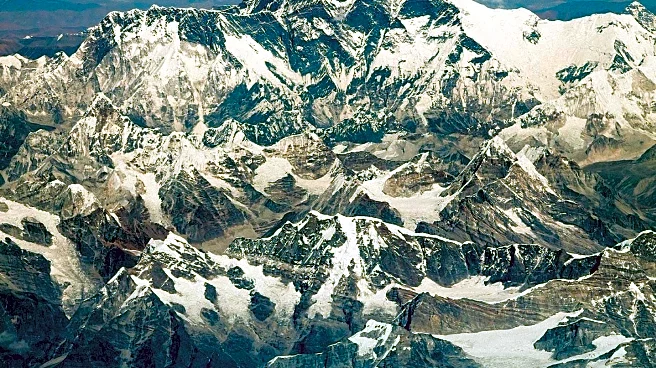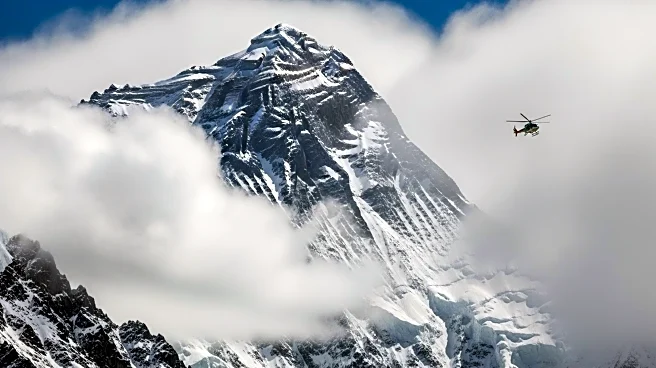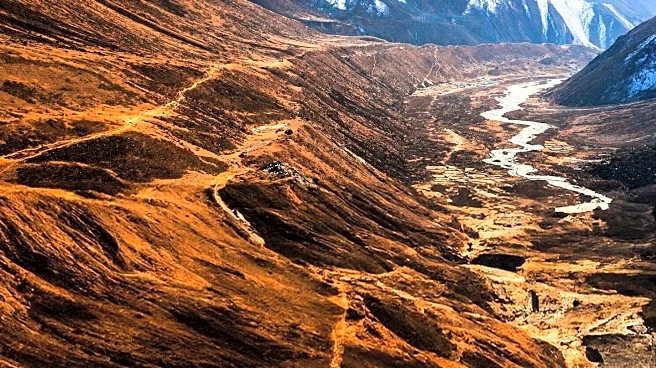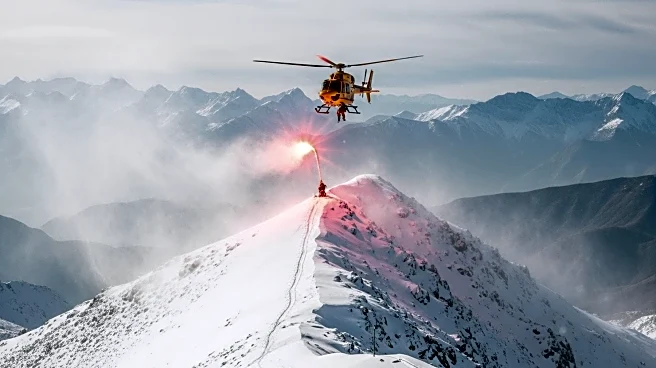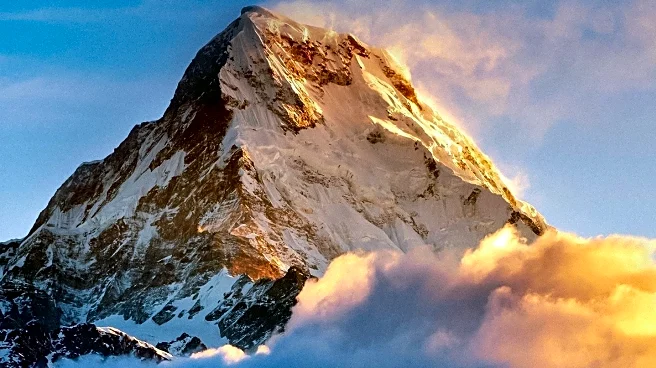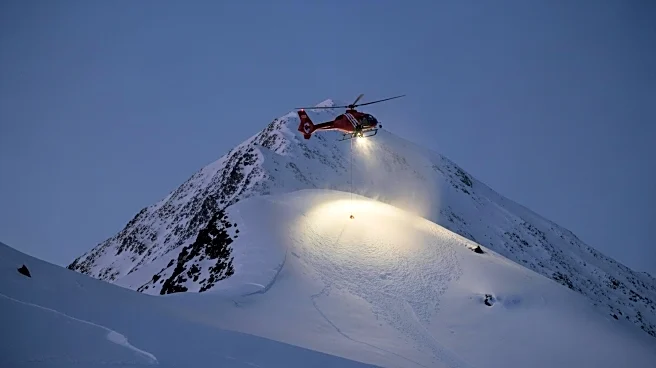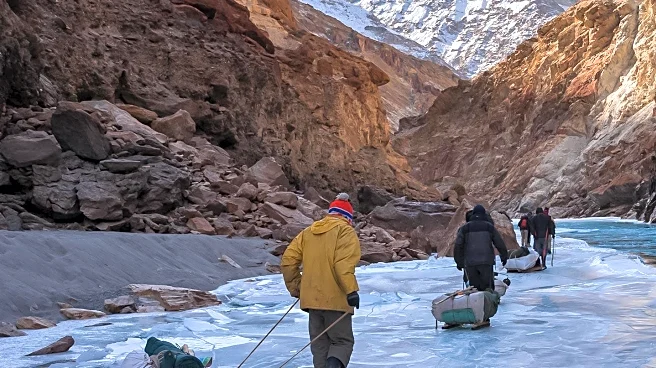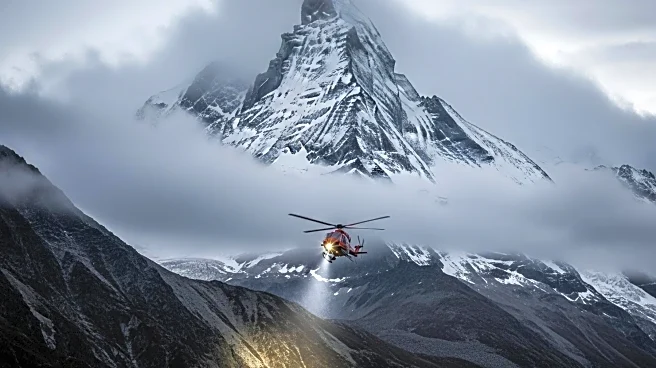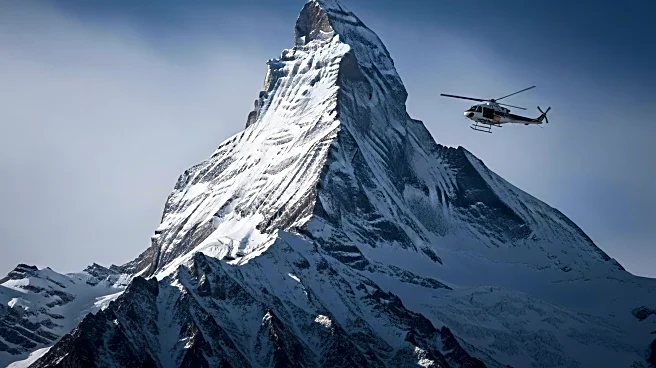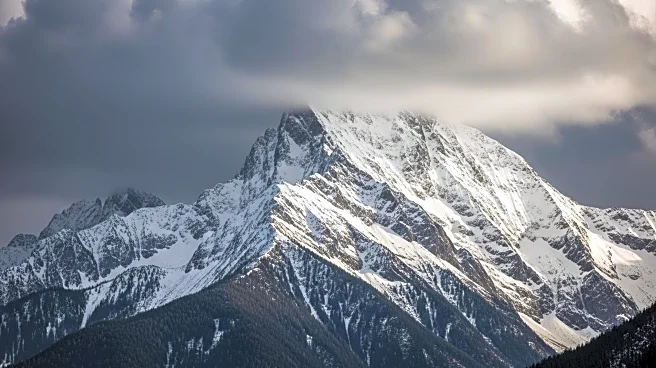What is the story about?
What's Happening?
A severe snowstorm has trapped hundreds of hikers on Mount Everest, leading to a significant rescue operation. The storm occurred over the weekend, coinciding with a national holiday that attracted a large number of tourists to the area. The local government of Shigatse, a city in Tibet that encompasses the Chinese side of Mount Everest, announced that rescue workers are in contact with the stranded individuals, ensuring they have adequate supplies. However, the exact number of people still on the mountain remains unspecified. China's central broadcaster reported that 350 people have reached a rescue point in Qudang, Tibet, while over 200 others are en route. Despite the ongoing rescue efforts, local tourism authorities have expressed uncertainty regarding the operation's status.
Why It's Important?
The incident highlights the risks associated with high-altitude tourism, particularly during adverse weather conditions. The snowstorm's timing during a national holiday underscores the potential for large-scale emergencies when popular tourist destinations are overcrowded. The rescue operation's success is crucial for maintaining the safety and reputation of Mount Everest as a tourist site. Additionally, the event draws attention to the need for improved safety measures and emergency preparedness in remote and challenging environments. The situation also poses logistical challenges for rescue teams, emphasizing the importance of coordination and resource allocation in crisis scenarios.
What's Next?
Rescue operations are expected to continue as authorities work to ensure the safe return of all stranded hikers. The local government and tourism authorities may review and potentially revise safety protocols and emergency response strategies to prevent similar incidents in the future. The event could lead to increased scrutiny of tourism practices in high-risk areas, prompting discussions on sustainable and safe tourism management. Stakeholders, including government agencies and tourism operators, may collaborate to enhance infrastructure and communication systems to better handle emergencies.
Beyond the Headlines
The snowstorm incident on Mount Everest may prompt broader discussions on the ethical implications of tourism in environmentally sensitive and hazardous regions. It raises questions about the balance between economic benefits from tourism and the responsibility to protect both visitors and the natural environment. Long-term, this could influence policy decisions regarding access to such sites and the development of more stringent regulations to safeguard tourists and preserve the ecological integrity of the area.
AI Generated Content
Do you find this article useful?
